Part 2 of this series is available here
There’s no doubt that the sump is the heart of a healthy aquarium system, and it has been a staple in the hobby for decades, evolving many times to incorporate the new equipment it houses. However, no sump can serve its purpose without a properly-designed aquarium plumbing system. The easiest way to connect your main system to the sump is with flexible tubing and, while it’s certainly an acceptable method of aquarium plumbing, it has many limitations. This is where PVC pipes, so common in many households’ plumbing grid, come into play, offering flexibility close to that of tubing while being modular and rigid, withstanding saltwater environment conditions with ease. In this two-part article I would like to showcase the basics of PVC and help design a fully functional aquarium plumbing system based on plastic pipes. Let’s begin this write-up by comparing PVC pipes to flexible tubing and talk about the differences, advantages, and shortcomings of the two most common materials used in aquarium systems.
Tubing
Advantages:
- quick and simple way of connecting an overflow and return pump to a display tank
- relatively low cost compared to PVC (not that the later is expensive, though)
- flexibility – plastic tubes are not rigid and can be shaped and bent to a certain degree, making the whole plumbing job hassle-free
- works well for smaller tanks where space inside the stand is limited
- easily replaceable
Disadvantages:
- flexibility – tubing is flexible, which, if not designed properly can kink, reducing the flow and shortening the return pump’s life
- most tubing is transparent in color, promoting unwanted growth inside the tube when receiving any light
- limited expandability-yes, you can buy splitters, reduction attachments, and valves with barbed connectors, but any more sophisticated plumbing work using flexible tubing becomes a mess
PVC
- PVC pipes are rigid and very hard to break
- PVC plumbing can withstand high pressures, making it the best choice for larger tanks where high volumes of water are exchanged
- modular design – with the amount of fittings, connectors, and pipe sizes available, plumbing based on PVC can be anywhere from very simple drain-return loop to very sophisticated designs moving water between multiple fish tanks
- clean look – with a proper plan, plumbing with PVC saves space in the sump area and allows for easy maintenance
- PVC pipes are opaque, no light spills that promote unwanted algae growth
- fairly easy to assemble once you learn the basics
- permanent connections- PVC glue is very strong, once you glue two parts together, they will stay together
- availability – most PVC components can be easily obtained in home improvement stores and plumbing supply warehouses
- expandability – with the use of manifolds, threaded caps, and other components, PVC plumbing can be easily modified and expanded
Disadvantages:
- not easy to replace- unless you use a lot of threaded connections in your plumbing, most PVC components are glued together and cannot be disassembled without cutting the pipe
- less flexibility than plumbing based on tubing (although there is a flexible PVC pipe available on the market that allows for some adjustments)
- PVC plumbing tends to be little more expensive than flexible tubing
Plumbing based on PVC has a lot to offer and its easily expandable when needed. It’s no surprise that PVC pipes are material of choice for most successful reef systems in the hobby, especially in the medium to large sized aquariums. Some hobbyists stay away from building their own plumbing system based on PVC without previous experience for fear of failing; I will try to prove that with a good plan, proper tools, and some practice, building a clean-looking, functional plumbing system for your aquarium is easy and enjoyable. Let’s start with the list of tools needed for the job.
Tools
a) cutting equipment- PVC pipes are made of a special kind of plastic that withstands physical abuse without cracking while maintaining its shape and integrity (to a certain level degree obviously, but try to break a piece of PVC pipe with a hammer and you’ll know what I’m talking about); there are several cutting tools available:
-PVC cutter
– PVC cutter: this scissor-shaped tool has a steel blade and ratcheting arm that cut through plastic with ease; this tool produces the cleanest cut, but it’s limited to a certain pipe diameter, usually 1 1/4″ OD (outside diameter); there are larger, automatic cutters on the market, but they are rather expensive for home use; most cutters available in home improvement stores cost around $20-$30
-hacksaw, PVC handsaw, or another type of saw with aluminum & plastic cutting, fine tooth blade- cheapest and most readily available tools; a little messy compared to PVC cutter, but you can cut larger diameter pipes; just make sure to sand & clean rough edges before gluing two pieces together
-wheel cutter – another tool that makes a clean cut; most copper pipe cutters work on PVC too and there are several models capable of cutting pipes up to 2″ OD
b) pliers- two pairs of good quality pliers to screw threaded fittings together
c) flat or hex socket screwdriver- to tighten stainless steel clamps where used
d) other tools- PVC plumbing jobs do not require any other plumbing tools to complete, but it’s good to have the obvious measuring tape as well as a small file to sand down uneven edges
Materials

Here’s a list of necessary materials:
-PVC pipes and fittings (more on that later)
-PVC glue
-PVC primer (often comes in sets with the glue and is usually dark violet in color)
-Acetone or denaturized alcohol to clean pipes & fittings of oils and dirt
-sandpaper to smooth out rough edges
-Teflon tape to water-seal threaded connections
-some kind of protection to cover the floor- be aware that PVC primer will stain carpets, stones, and hardwood floors
-mask if you can’t take PVC glue & primer odor
PVC pipes & fittings schedule
Before we start shopping for PVC plumbing components, it’s good to know our options and also what all the symbols used in the trade mean.
There are two common types of PVC pipes readily available on the market, labeled Schedule 40 and Schedule 80, respectively. The difference between the two is in the pipe wall thickness and therefore working pressure ratings. Schedule 80 pipes have thicker walls and its fittings are slightly larger than Schedule 40. Both types are interchangeable, meaning that you can use Schedule 80 fittings on Schedule 40 pipes and vice versa. Schedule 80 elements, being high pressure rated, cost more and not all stores carry them. While there is a group of people in the hobby defending Schedule 80 pipes as a better choice for aquarium plumbing, I honestly don’t see the advantage given the relatively low pressure that aquarium pumps create, although they can withstand more abuse and so are theoretically a better option if you’re willing to spend more on them. Let me just say that Schedule 40 pipes can handle any of the home aquarium plumbing systems, unless we’re talking in-wall, thousands of gallons monster tanks, but that is beyond most hobbyists’ aquarium plumbing knowledge and should be left to professionals. Therefore, all plumbing examples in this article are based on Schedule 40, but will be exactly the same if you opt for Schedule 80.
Pipe sizes
PVC pipes are sold in many sizes, but the range useful for most home fish tanks falls between 1/2″ and 2″. Please note that there are many factors that can alter the pipe size choice, like pump head (the vertical distance between return pump’s outlet and display tank return outlet(s)), the pumps gph ratio, and the available bulkheads. Speaking of the latter, you should always check your tank bulkheads’ sizes (if your tank came with them, obviously) and base your pipe size choices on that information. Talk to your fellow hobbyists about their plumbing too, they can help you choose the right size for your tank. It is equally important to know your overflow GPH ratio and choose pipe sizes accordingly.
Types of fittings
There are many different pipe fittings available on the market and I cannot cover all of them here, but I’ll try to include the common ones available in most plumbing supply stores.
All fittings sold in the USA use NPT (National Pipe Thread) standard, unless of course it’s a special fitting or one made for metric-sized pipes. The use of one uniform system for all fittings means that no matter where and from what company you get pipes & fittings, they will work with any other fittings available in stores. There are two ways to connect pipes to a coupling:
-SLIP- a coupling slides on to the pipe- PVC primer & glue are used to connect them together. This kind of connection is permanent, once you glue two pieces of PVC together you cannot adjust or take them apart ( unless you cut the pipe and use the coupling to connect new fittings)
-THREAD- two types are used, MALE (MPT) and FEMALE (FPT) , where the MALE fitting is screwed into the FEMALE; this kind of connection is not permanent and can be disassembled when needed. Teflon tape is used on MALE fittings to waterseal the connection.
Here’s a photograph of basic fittings used to plumb a fish tank (I’ll get to unions and valves later):
-90° elbow- most popular fitting used to change direction of the pipe from vertical to horizontal and vice versa
-45° elbow- diverts pipe orientation from horizontal & vertical to diagonal- I use two of those fittings glued together to form a 90° elbow where space allows- this method allows for a wider curve than one 90° elbow transition from vertical to horizontal and therefore lessens back pressure on the return pump
-coupling- fitting used to connect two pipes together
-T fitting- basic fitting to create manifolds and direct flow to more than one outlet (more on that later)
-SLIP to threaded coupling- comes in any combination of SLIP to threaded connection (female or male)
-3 way elbow – a variety of the 90 elbow, with three side couplings
-reduction coupling- useful when there is a need to change pipe diameter- comes in any combination of SLIP to THREAD and can reduce pipe diameter by several sizes
-plug or cap- used to cap the end of a pipe (I will show you the usefulness of this kind of fitting later in the article); cones in SLIP and THREAD varieties
Valves
PVC plumbing offers several valve choices for directing and controlling flow throughout aquarium(s) . Using valves is the simplest way to adjust the amount of water distributed between your display tank, external refugiums, holding tanks, and various media reactors. The basic role of a valve is to reduce the return pump’s flow in cases where the overflow can’t handle the amount of water pushed by the pump. Although this method works for most pumps, I am against reducing flow that way, as it creates back pressure on the pump’s impeller, shortening its life span and radiating unwanted heat to surrounding water. In my opinion, it’s much better to use that extra water volume to run media reactors and UV sterilizers, than to limit the return pump’s capabilities (and I’ll show you how later in the article). And contrary to some beliefs, by reducing the flow, some energy is wasted as the additional heat produced by the pump’s head working at higher pressures. If ability to reduce a pump’s flow is absolutely necessary, I recommend using controllable pumps, like the Eheim Compact line or the newest RLSS DC powered pumps equipped with external controller.
Back on topic- there are many valve designs available on the market, but two kinds are used in an aquarium environment most often:
-ball valves (swing type)-
The cheaper of the two, a ball valve turns water off and on by means of a swing arm; the half sphere shaped element inside the valve reduces the flow and there are no washers or gaskets in this design (at least most of them don’t have it), making it virtually fail-safe, and all of the valve’s plastic parts are properly molded & assembled. Ball valves are relatively cheap (expect to pay anywhere from $5-$20 for one, depending on size), but they can’t match the level of adjustment that gate valves offer; I like to use them as an on/off kind of valve (for example, to hold water in the overflow area while cleaning it) or in situations where minute flow adjustments are not required
Gate Valves
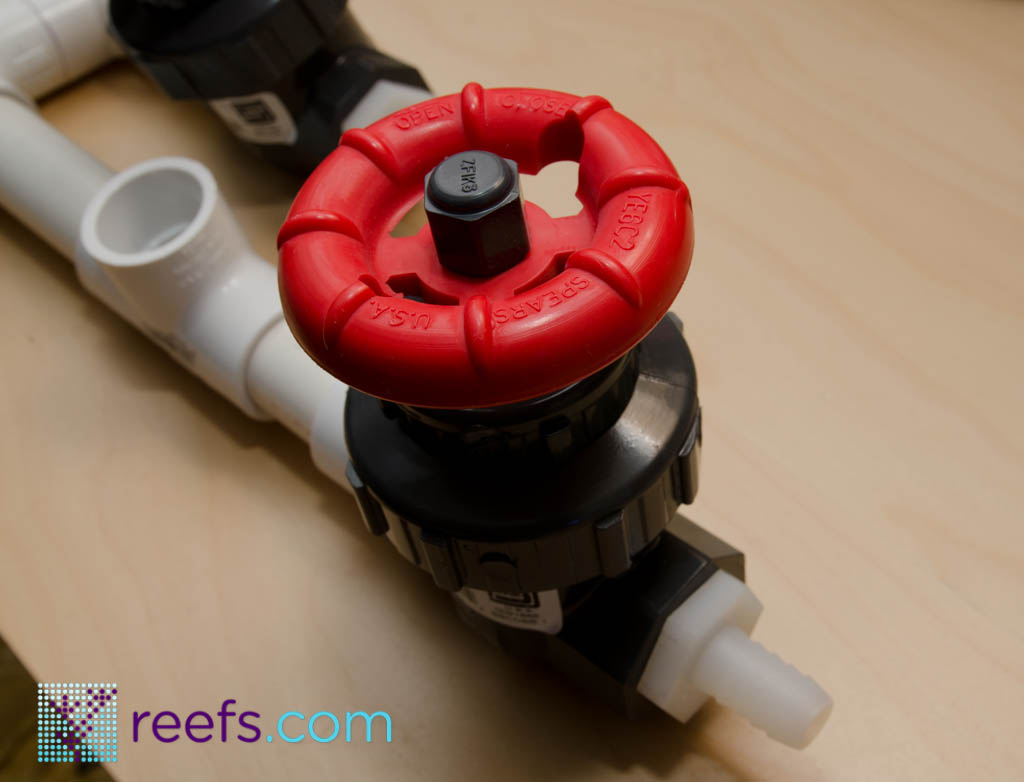
Gate valves are much more expensive than ball valves (they cost from $15 up to $100 in aquarium plumbing sizes), but their build allows for a very precise flow adjustment and therefore are my first choice when directing a pump’s flow to media reactors and UV sterilizers; to change flow ratio in a gate valve, a knob is turned clockwise (closing) or counter-clockwise (opening) which in turn lowers or lifts a little “gate” inside the valve.
Both types of valves are manufactured in a large variety of connecting options- from simple SLIP openings to threaded or barbed fittings. I strongly recommend using THREAD connections for all valves, especially when buying gate valves, as it allows for easy disassembling in case you want to reuse them in future projects and/or tank upgrades
Union Coupling
In my opinion, a union coupling (or union valve) is one of the best inventions in plumbing. Incorporating it in a plumbing grid greatly improves modularity and allows for easy disassembling in case of planned changes to the grid or when doing maintenance. Union couplings consist of three parts- a female and a male end, plus a nut that connects them together. The oversized nut and rubber seals on one end provides a watertight seal. PVC union couplings can be, in most situations, hand tightened, which adds to their usability. They have many uses in saltwater systems and here are some of the most popular:
-in the drain section to separate the bottom piece of pipe going into filter sock; unscrew the nut and take out filter sock for replacement
-in between a return’s pump outlet and the rest of the plumbing, which allows for quick disassembly for cleaning; same is true for any other equipment that we take out for maintenance, such as reactors, UV sterilizers, or inline heaters
-on manifolds to quickly remove whole sections of plumbing that are not in use
Here’s how a standard union coupling works:
Flexible PVC Pipe
Although plumbing projects based on PVC are rigid in nature, a little bit of flexibility comes in the form of flexible PVC pipes. Flexible PVC is a semi-rigid plastic material that can bend to a certain degree while otherwise still retaining all other characteristics of a standard PVC pipe. Flexible PVC can be glued to standard fittings using the same primer and PVC cement as rigid pipe. It comes in handy when space is limited and it’s easier to use, but it’s a little pricier than rigid PVC pipe and not all plumbing supply stores carry it. I think that if you can get flex PVC locally and don’t mind higher price tag, it can be a useful material to work with.
The use of flexible tubing in PVC aquarium plumbing
Although the topic of this article is to show the advantages of PVC pipe over flexible tubing, the latter definitely has a use in the typical hard plumbing setup. Gate valves are the best way to fine tune flow through media reactors, and here’s where flexible tubing comes handy. Media reactors need to be disconnected from the system on a regular basis, to clean, and to add and replace filtration particles. With the use of flexible tubing, media reactors can be moved and disconnected fairly easy. You can achieve the same with PVC union valves too, but it tends to be bulkier and since the pressure of water flowing through media reactors is rather low (unless you build a monster tank, but in this case the plumbing approach is entirely different), using flexible tubing is acceptable.
The transition between PVC and tubing comes in the form of THREAD x BARB or SLIP x BARB fittings, where one side has a threaded connector in PVC schedule size and the other is a barbed connection on which the tubing is pushed.
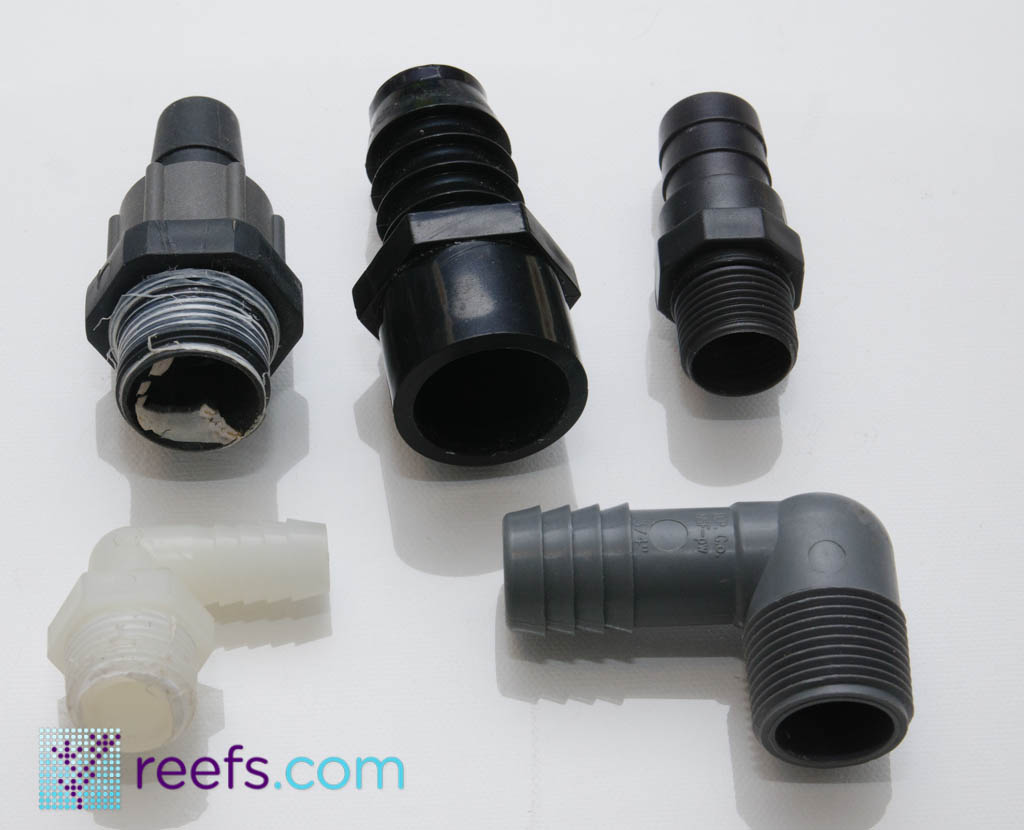
The outlet side of gate valve has a MPT x BARBED fitting that runs to an identical fitting on the media reactor, while from the outlet side of the media reactor runs a flexible tubing all the way to the filter sock to catch any particles that may be sucked out of the reactor. When changing media, I close the valve and unscrew the lid of my reactor, and rinse it in the tub. Flexible tubing stays attached to the lid. In situations where the reactor’s design does not allow it to be easily removed without unhooking the tubing, there is a solution: Eheim double valves. Double valves can be disassembled in the middle and quickly hand-tightened when media is changed. Eheim double valves come standard in most Eheim canister filters, but they can also be purchased separately. If you follow my idea, you need at least one double-valve on the inlet side of the reactor to disconnect it from the rest of the plumbing grid.
When buying flexible tubing, three things are important:
– to get a quality one that won’t kink or crack with prolonged use, such as the Eheim tubing pictured below (I’m a huge fan of Eheim tubing, it has really thick, semi-rigid walls and it has never failed on me)
-to avoid translucent tubing; any light coming into the sump will trigger algae, sponge, and calcerous worm growth inside the tube and therefore reduce flow through it
– to always use stainless steell or nylon clamps on barbed connectors to avoid tubing slipping out of the barb and flooding your floor
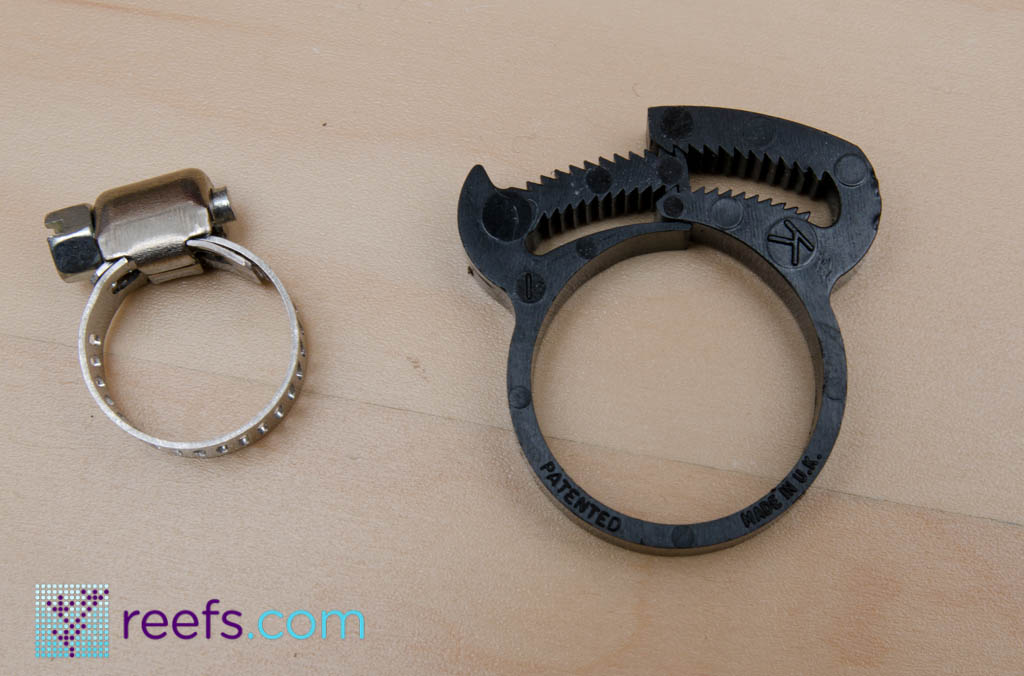
Cutting & Gluing PVC
Creating watertight connections between two PVC pieces is extremely easy if you follow a few basic steps:
-cut the pipe to desired length (PVC pipe should fit no less than 3/4 into the fitting)
-clean connection points’ surfaces with alcohol or acetone (if a hacksaw was used to cut pipe to length, it’s important to sand the edge with fine sandpaper)
-prime both PVC pieces with dedicated PVC primer (be careful, the violet PVC primer will stain hardwood, clothes) and wait a few seconds for it to dry
-apply PVC glue to the inside of the fitting and push pipe into it.
PVC glue (or PVC cement as it used to be called by professionals in the trade) dries very quickly, so make sure your fittings have the correct orientation before gluing. It’s also a permanent connection, so once you glue two parts together, it’s almost impossible to disassemble them. You’ve got about 10 seconds…
This ends part I of Aquarium Plumbing Guide. In the second part I will present two plumbing scenarios and explain in detail how to put them together and create a working plumbing grid for your tank. Coming soon!


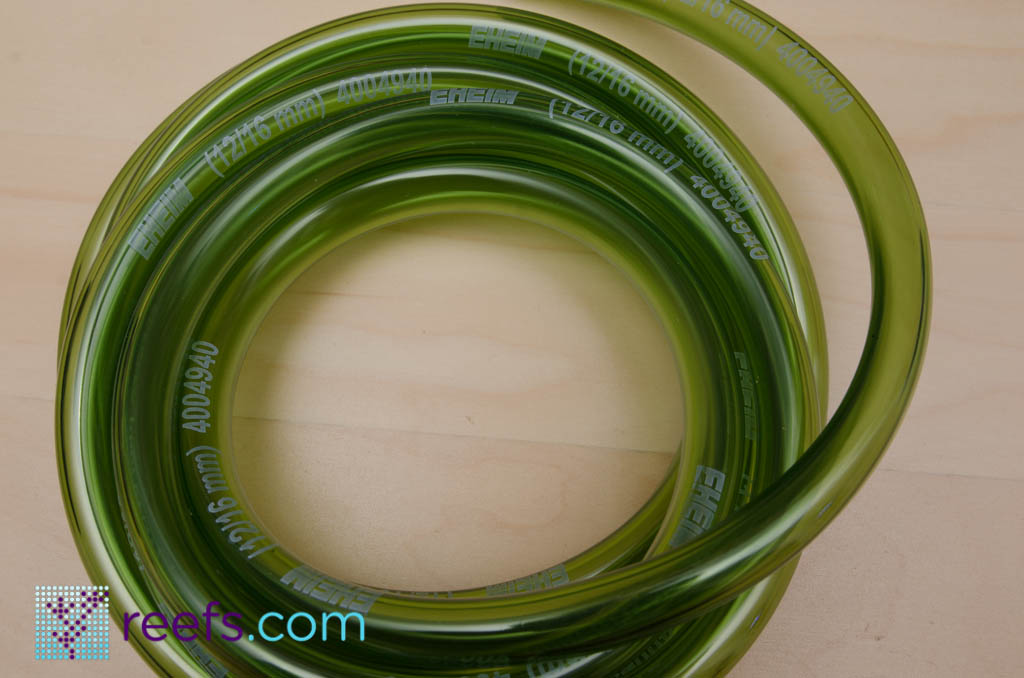
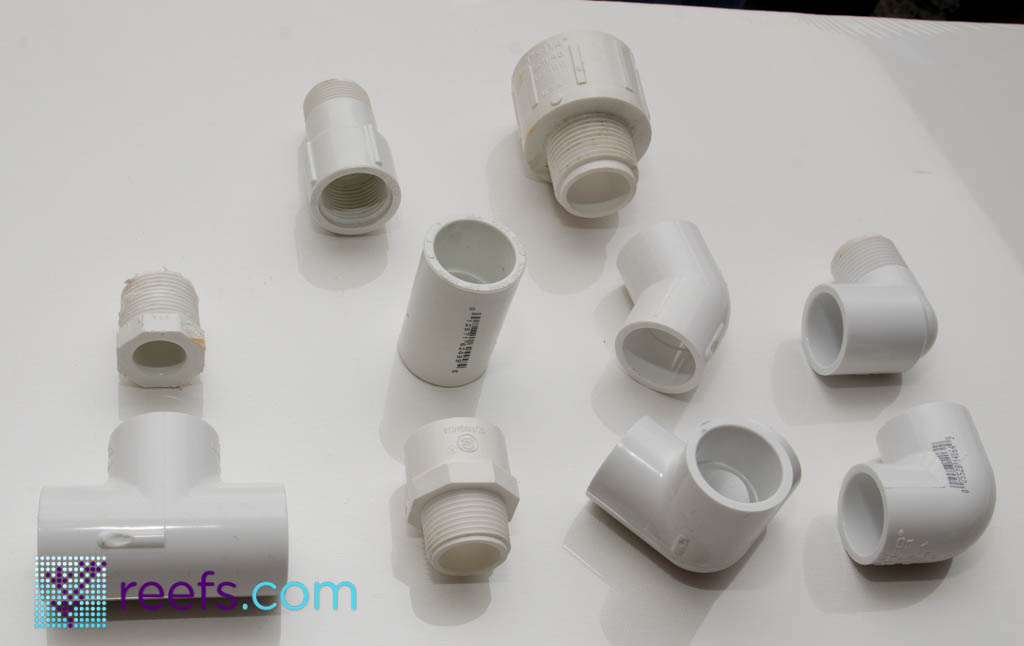

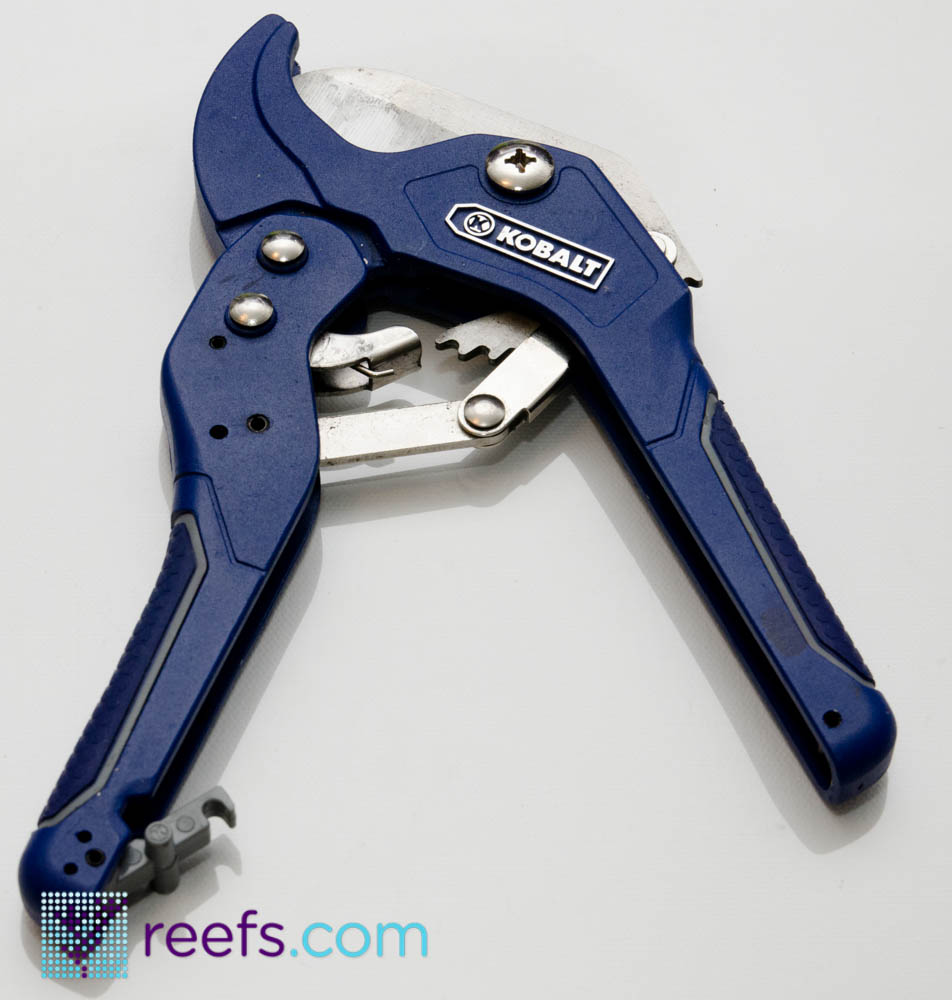
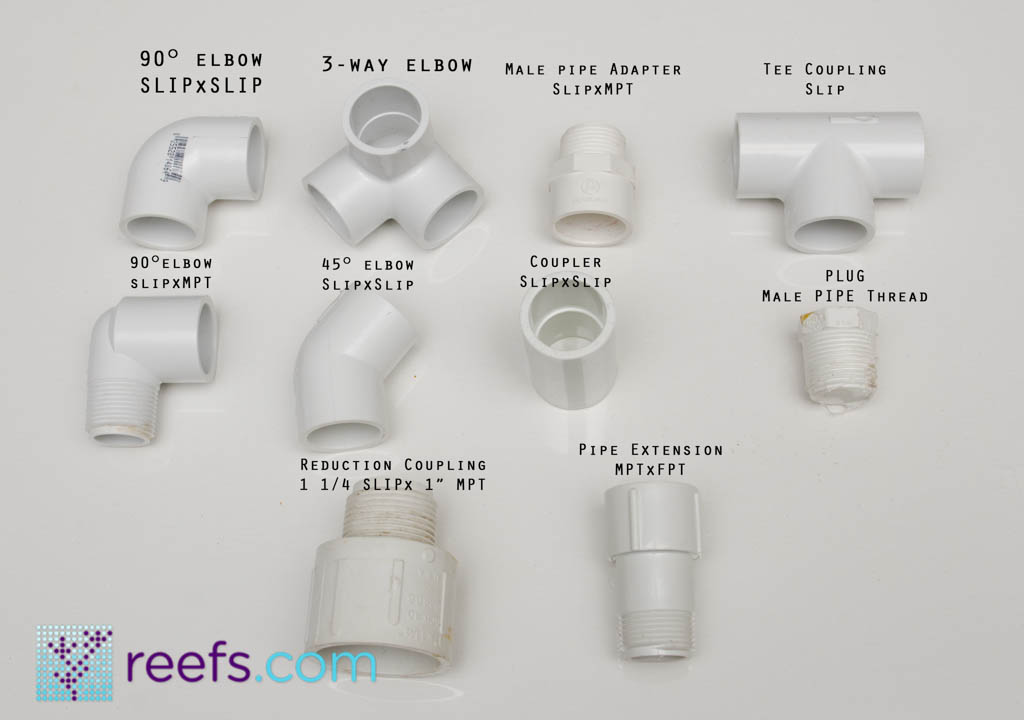
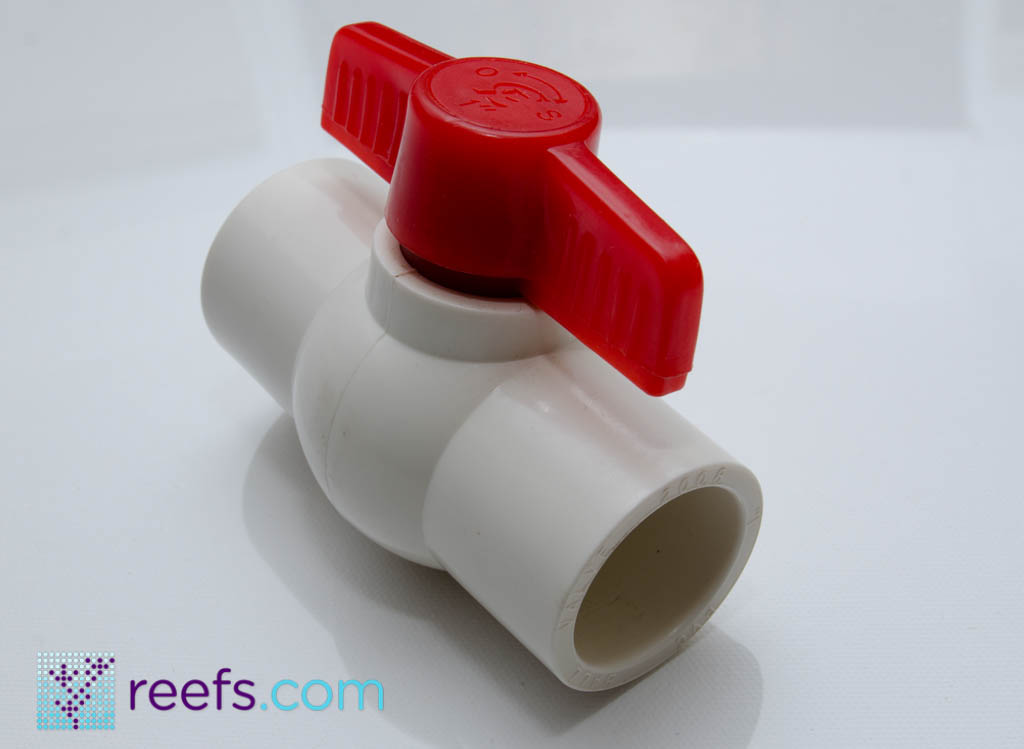

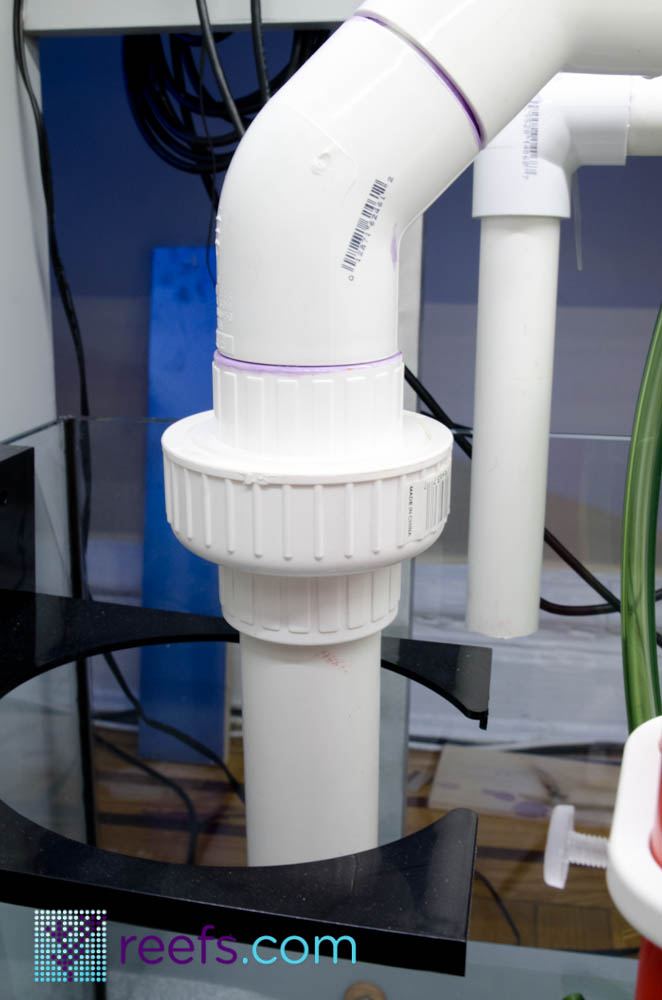
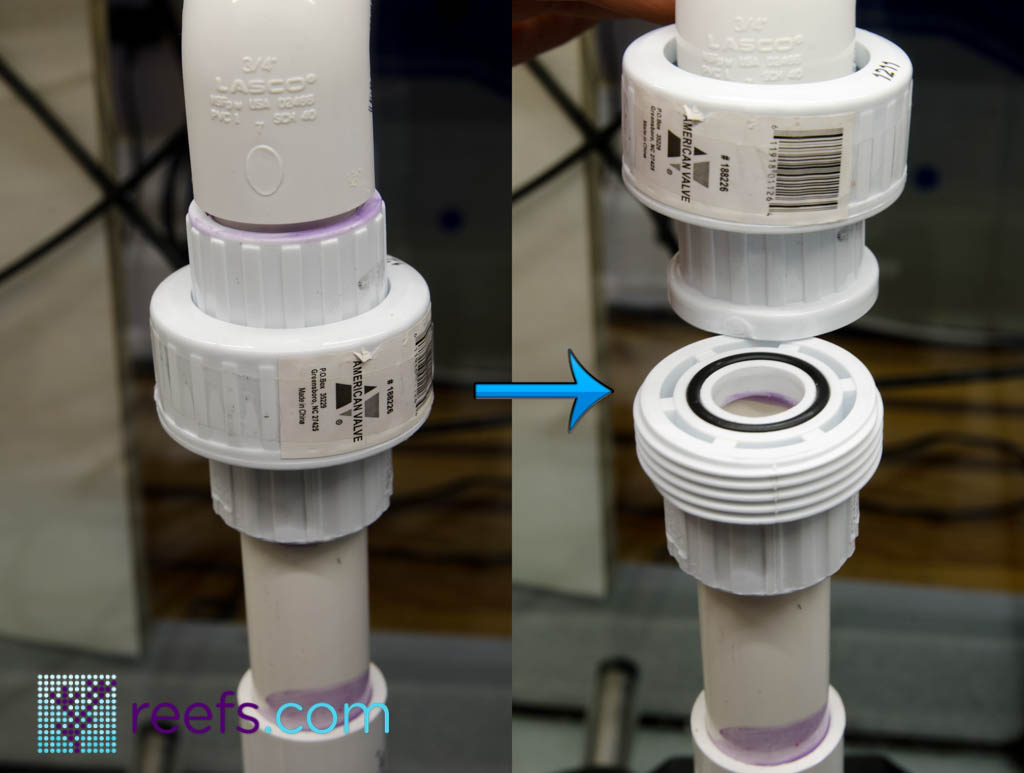








I know this is an old article, but I’m just now finding it. Thank you so much. This is incredibly helpful for a guy who’s plumbing his first sump.